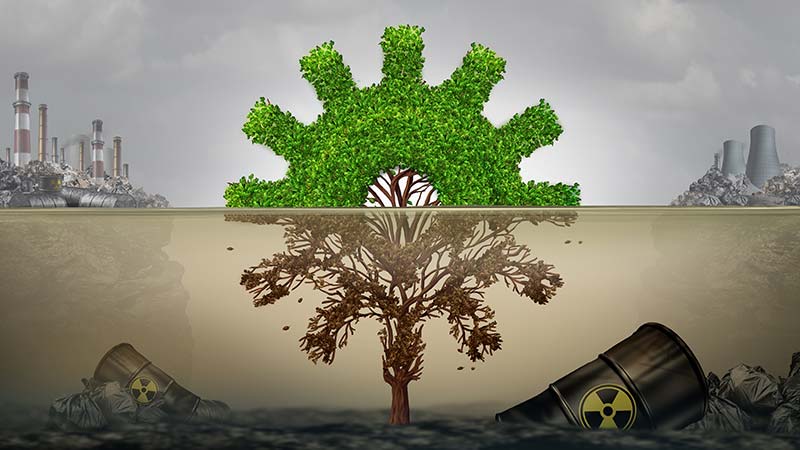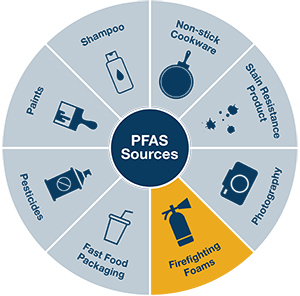COVID-19 Results in Heightened Environmental Exposures

Recently, our very own Environmental Division President, Mark Vuono, was featured on PC360. In his article, he discusses how the current coronavirus global pandemic has heightened both the exposure level and awareness of environmental risks that clients need to address. Although most environmental policies do not offer coverage directly related to COVID-19, they do provide coverage for several exposures that are outlined within this publication.
As the country and the entire world struggle to control the immediate threat to human health caused by the current coronavirus (COVID-19) outbreak, there are numerous environmental concerns and unexpected consequences that businesses must also deal with, both shorter and longer-term.
The immediate impact
Immediate concerns that may heighten environmental exposures include:
- Vacancies of buildings for indefinite amounts of time
- Repurposing of vacant properties for emergency needs
- Changing the use of the property from its intended designed use
- Sudden disruptions, delays, or abandonment of on-going construction projects
Some of the immediate concerns that will need to be addressed from the unexpected closing of businesses for an indeterminate amount of time includes a large number of buildings and/or units being vacated or maintained with only minimal support staff.
Want to read more?
Long-term conditions
Longer-term impacts as a result of COVID-19 include concerns surrounding:
- Building re-occupancy
- Reopening of construction project sites
- Permanently closed businesses resulting in building vacancies or redevelopment
- Future development of logistical operation needs, such as warehouses and distribution centers, etc.
- Increase in the transportation of goods
- Potential for more manufacturing operations to move back “on-shore”
Longer-term impacts of the COVID-19 pandemic include concerns as vacant buildings are currently being re-occupied in phases across the U.S. Proper management practices developed and adhered to, which will ensure the ongoing safety of the property to the public and building occupants. Thorough disinfection and testing may need to be conducted for a variety of pollutants beyond the coronavirus prior to the building being re-occupied. Even once the “green light” is given, continuous monitoring and testing may be required based on the type of occupancy and business conducted.
As project sites are also re-opened and contractors and various site personnel are allowed back to work, the current status of the project needs to be determined concerning any new pollution exposures that may have developed during the shutdown. It will also need to be determined whether changes to the construction design may need to be implemented to account for the potential longer-term risks associated with coronavirus or other newly discovered pollutants.
There will be businesses that permanently close or that will adapt business models to include shifting a higher percentage of sales and distribution via online platforms. This “Amazon effect” will result in many vacant retail properties that will eventually need to be addressed. In fact, the construction of malls has significantly declined with the last indoor mall in the U.S. built in 2007. Many of these properties will eventually undergo some form of redevelopment, similar to the “brownfields redevelopment” movement that started in the mid-1990s and has accelerated in recent years even prior to the current pandemic. The redeveloped shopping centers are often transformed into warehouses, industrial parks, multi-family residential properties, or repurposed for some other different retail/business use. Some mall redevelopment projects include car dealerships, car storage, churches, offices and medical office complexes.
![]()
Any time there is a redevelopment project taking place, the potential for environmental exposures increases.
Interested in learning more?
Potential Contamination, pollution threats
As a result of the current pandemic and its stay-at-home orders, people have had the opportunity to grow further accustomed to online shopping and home delivery. Download the full PropertyCasualty360 article or read our recent Environmental Insider publication to learn how this has accelerated e-commerce and the need for products to be readily available and able to be delivered in a quick and efficient manner.

This has the potential to result in future development of logistical operations, such as warehouses and distribution centers, etc. In addition, an increase in pollution events may arise from the increase in transportation of goods, which could result in more spills of hazardous and nonhazardous materials.
To avoid future disruptions of supply chains, there is the potential for more manufacturing operations to move back “on-shore.” Future manufacturing plants will need to be built and operated in compliance with the most recent environmental regulations and tightening standards.
We will need to take into account the myriad of emerging contaminants related to manufacturing that are currently being studied,” said Sara Brothers, divisional vice president and director of technical support for Great American’s Environmental Division. “For example, fluorinated compounds known as ‘PFAS’ (Per- and polyuoroalkyl substances) are a class of chemicals which have been broadly used in the production of consumer goods, and in many manufacturing processes, including electronics and semiconductor manufacturing since the 1940s.”>

PFAS are also present in fire-fighting foam. Although certain classes of PFAS which are known to be toxic were phased out in the United States in the early 2000s, they are still being produced and used overseas. Other PFAS compounds are still being produced and used here in the United States. In the past few years, PFAS has been detected in drinking water sources, air emissions, and soil, resulting in a broad movement to further study and regulate their use. Many states now require companies to investigate and cleanup PFAS found in contaminated groundwater, surface water, soil, and sediments.
The current coronavirus global pandemic has heightened the awareness of environmental exposures that need to be addressed. Whether developers, landlords, facility operators, contractors, lenders, and financial institutions or motor carriers, many businesses must consider these exposures as part of their current and future business plans.
To effectively manage risks during this ever-changing e-commerce revolution, one tool that can be used in the risk management process is having the proper environmental insurance protection in place to deal with the unexpected issues that may arise. While most environmental policies do not offer coverage directly related to COVID-19 or any form of communicable disease, they do provide broad coverage for the numerous environmental exposures that could be faced as outlined in this article. Securing the appropriate environmental coverage to help mitigate environmental risks and beyond is crucial for any business. A knowledgeable broker can be a frontline resource in assisting their clients in understanding the real environmental risks associated with their business and secure coverage with a trusted carrier.
Want to learn more?
We encourage you to continue learning about the importance of environmental coverage and how Great American can best assist your clients in avoiding costly financial situations!


Mark Vuono, Divisional President
Great American Environmental Division
Mark is Divisional President after holding the position of Chief Underwriting Officer since the start of Great American’s Environmental Division. Along with his extensive experience in the insurance field including business planning, product development, underwriting and training, his background also includes experience as an environmental specialist as well as a health & safety officer. He is based out of our Exton, Pennsylvania office.